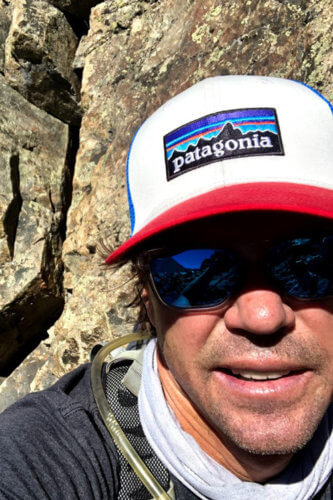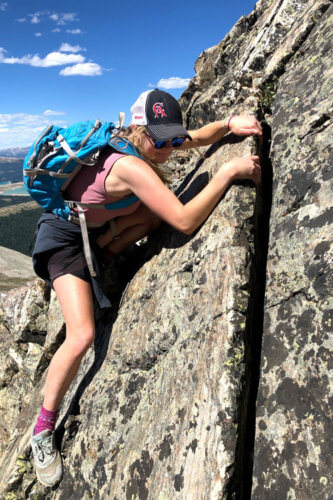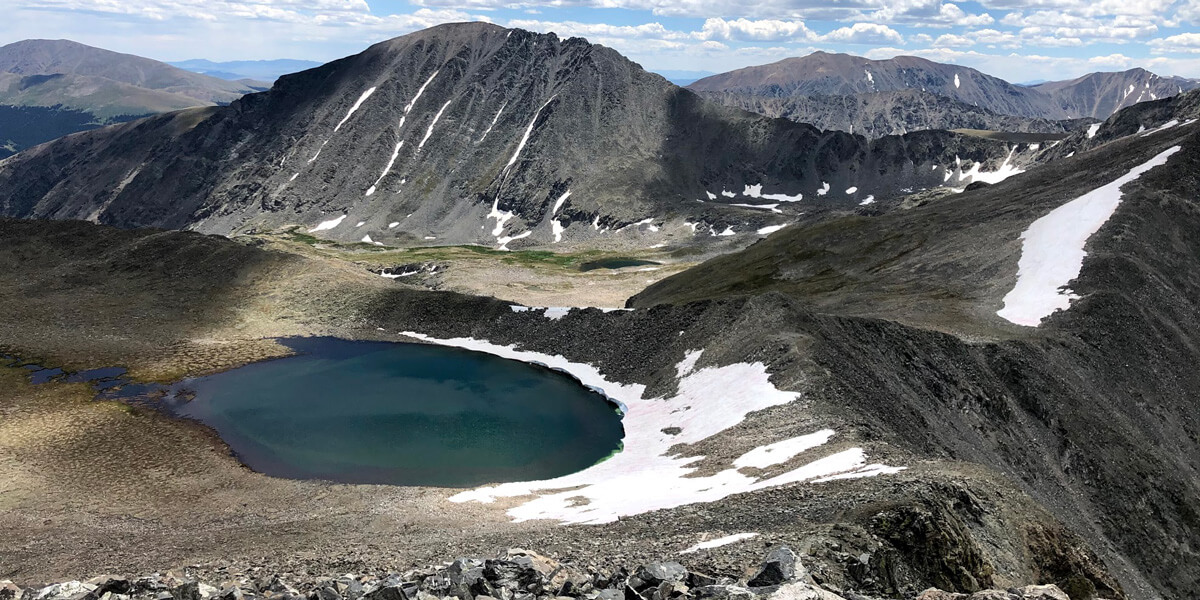
When I am out in nature, I find that my brain automatically goes into “reflection mode.” To be sure, being unplugged and disconnected from email and text surely helps. My mind just starts thinking through various ideas and events. Right before one of my daughters went to college, we climbed Mt. Pacific and Mt. Atlantic—two 13,000 foot peaks in the Ten Mile Range that involve a bit of exposed scrambling.
As I was coming down from the summit, I found myself thinking about what I learned from COVID-19 as a leader. In my now nearly 20 years of being an independent school leader, there have been few challenges like this. Our typical school “issues” at Colorado Academy are not on any level close to what COVID-19 has presented. Despite how awful this pandemic has been in terms of the negative impact on society, public health, and loss of life, this crisis has helped me grow. This experience has forced me to look at my approach to leadership and make changes in how I approach my work.
What I have learned
Get comfortable with uncertainty.
Coping with uncertainty has been the hardest part. I like clarity. I like predictability. Given my responsibility for the education and safety of a community of more than 1,000 students, I try to avoid drama. There is nothing predictable about what we are living with right now. A novel virus means there is little that we know and much we have to learn. We are learning more every day, and sometimes new studies contradict earlier understandings of the virus. In such a fluid environment, I have learned to be patient and less reactive to new information. There were times when our planning was completely thrown off by new information, and we had to start over. We learned that we had to constantly question and go backward in light of new evidence. This uncertainty has led many Americans to have perspectives about the virus that are sometimes polar opposites. This forced me into developing new ways of processing data and information to make smart decisions.
Build and trust a strong team.
A fundamental part of creating a system to make sense of this uncertainty is to surround oneself with smart people. I could not be more grateful for CA’s Administrative Team. Our COVID-19 Task Force met regularly this summer to think through our reopening plans. The complexities of reopening were enormous, but this team persevered and worked diligently to work out complicated issues. And it’s far from done, as each day brings new realities that require attention. This group listened to one another, did their research, and then acted decisively. What guided this group was a shared purpose to serve our students. In this process, we listened to all voices—both inside and outside of education.
Plan for the worst.
I can sometimes be a fatalist. The Jim Morrison lyric, “The future is uncertain, and the end is always near,” tends to guide me to do all that I can to avoid failure. It’s really not always a healthy way to approach things. But, it helped this summer. It is not hard to look at what we are facing right now and think in worst-case scenarios. When one starts thinking about what one would do in a worst-case scenario, it can help build confidence that nearly any problem is surmountable. The planning of what school might look like in a continued pandemic helped our team move forward with breaking down some of the issues. It forced us to think about what is most important and prioritize from there. It allowed us to confront problems in a less irrational or emotional manner.

Prepare to be self-reliant.
Ask any school administrator in a public or private, elementary or higher education setting, and I bet many would say they felt on their own as they prepared to reopen this fall. You can read a great article about how public schools in Colorado went about their planning process this summer and the lack of clear guidance any educational leader received. It explains why there is such a patchwork of approaches in the state. Being an independent school has many advantages. We have always had a mindset that it is up to us to determine our future and fate. Our team did all that it could to order the necessary equipment and change the fundamental aspect about how we re-open school safely.
Be direct.
One of the best parts of my job is the contact with each of you. Parents know I welcome feedback, and because of this, I hear dissent to decisions made. I see each email and phone call as a chance to gain a different perspective. It’s information I bring to every decision I make. So keep it coming, but know in the end, the best we can do is to be direct. To be sure, we use data to inform our decisions, but we also are guided by our own understanding of our community. We know what we can do safely, and how the actions of others can impact those efforts. Our goal is to be transparent. In this moment, we all have to trust one another and know that we are all working toward the same goal. The safety of CA students, faculty, and staff is an enormous responsibility, and I have never felt that more than I do right now.
Put others first.
The idea of safety is not just in terms of preventing the spread of COVID-19. It also relates to the mental well-being of young people who need human contact. This is a time to model the idea of putting others first. We should all agree that students need to be with one another and that their learning matters.
It’s been an exciting and intense few weeks since school officially started on August 18, and I’m so appreciative of the support of our families. The lessons I learned from COVID-19 this summer come into play every day. This week I have been so grateful to see all of our students back on campus. I even had a socially distanced movie night for my Senior history students. We set up an outdoor projector and watched a movie outside. The outdoor common areas and classrooms are filled with laughter. We got to see our Seniors welcome the Freshmen—a great tradition. We will get through this, and I hope, as we do, we all learn something about ourselves.
